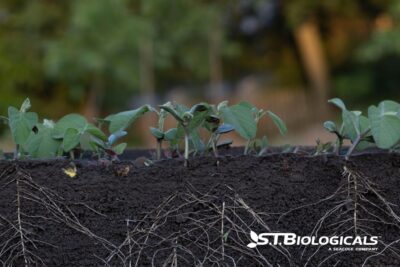Foliar feeding is one tool in your multi-tool ag box to achieve optimum plant and soil health.
Some people claim foliar feeding enhances nutrient absorption. Others believe leaves are not designed for nutrient uptake, that’s the main job of plant roots.
The benefits of foliar feeding can be attained with a balanced approach.
Why Use Foliar Feeding in Your Fields?
Foliar feeding usually delivers a quicker response time to nutrient application. It is a valuable tool for addressing issues uncovered through plant tissue analysis. This blog goes into depth on plant tissue analysis.
If your plants test for a deficiency in a micronutrient, foliar feeding may be the tool you need to achieve a good harvest this season. There is less leaching of nutrients when foliar sprays are used instead of in-furrow or broadcast applications. This is especially true of mobile nutrients such as magnesium.
Nutrients can be absorbed through the stomata on the leaves. Stomata serve as entry points for air (laden with carbon dioxide) used during photosynthesis. Research suggests that nutrients are more likely to be taken in through the leaf cuticle, which contains extremely minute pores with negative charges that attract positively charged elements like calcium, magnesium, and potassium.
Foliar vs Soil Nutrient Applications
An advantage to foliar feeding is the efficiency of trace elements to be absorbed through the leaves and stomata. With a foliar spray, you decrease the likelihood of leaching or nutrients being tied up with other nutrients in the soil. With leaching or soil nutrient tie up little nutrient is left available for plant uptake.
But be aware that inorganic fertilizers may not be as efficiently taken up by plants through foliar sprays. Many forms of nutrients need to be changed by soil microorganisms into plant-available forms for uptake.
Applications of macronutrients such as N:P:K are needed for base nutrients in soil. The tiny root hairs are a primary mode of nutrient uptake by plants and these applications feed the microbes in the soil. All these macro nutrients can be applied in various forms as foliar nutrients at critical time frames for plant growth and reproduction.
Foliar applications alone will not provide a plant with all the nutrients necessary for optimal growth. The size of the nutrient molecules determines the efficiency of foliar feeding.
The openings in plant leaf cell walls are very tiny. Water drops greater than a mist will roll off the plant, taking any foliar nutrients with them. Incorporating nanotechnology into your foliar feeding program helps make your efforts more efficient and effective.
Foliar sprays are useful as one tool in developing healthy soil. A foliar spraying program can help plants in the short-term but for long-term field health, a coordinated cover crop and crop rotation program with no or low-till is recommended. Contact our team at ST Biologicals to learn more about the benefits of foliar feeding and crop yields. We’re here to help you succeed. Soil speaks, we listen.

